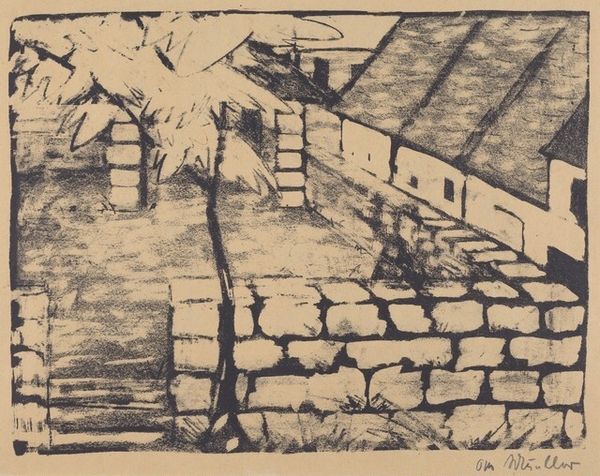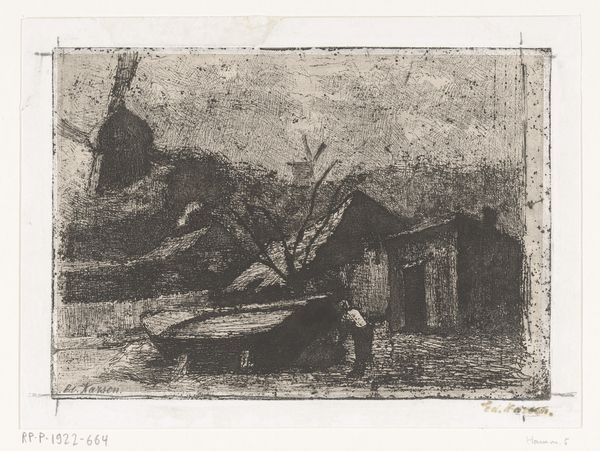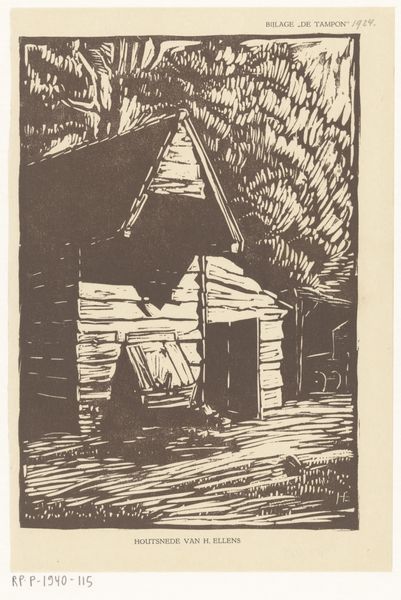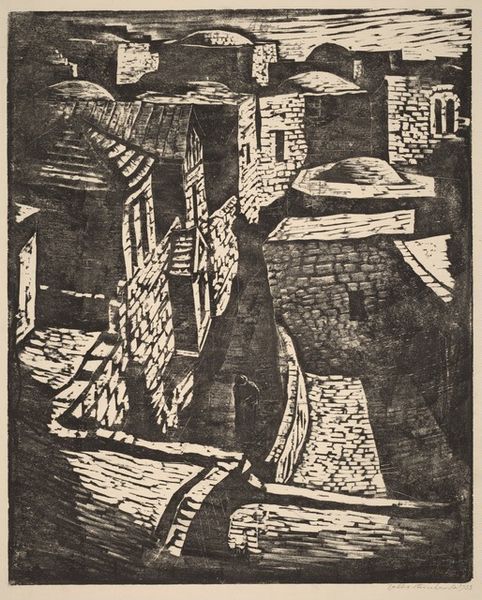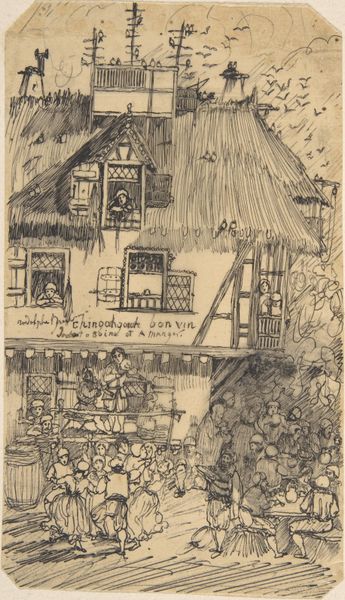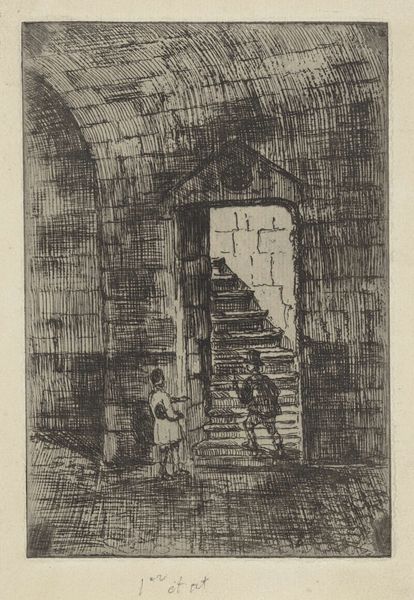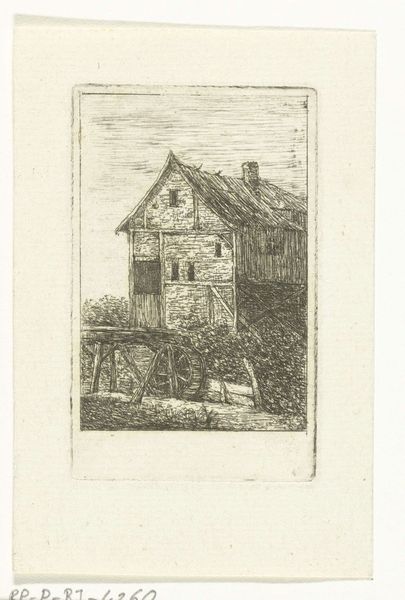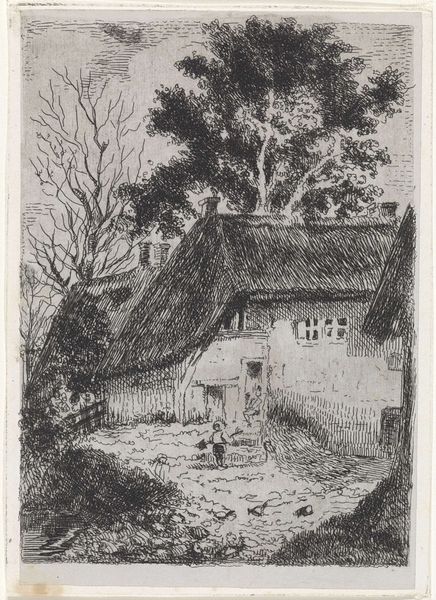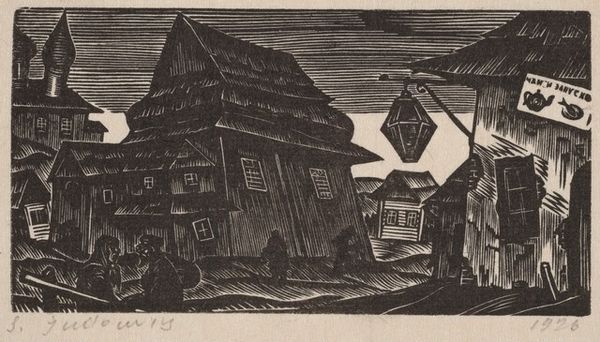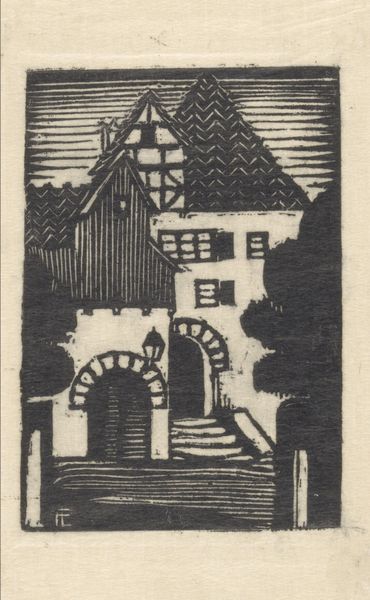
drawing, print, ink, engraving
#
drawing
#
ink drawing
#
pen drawing
# print
#
landscape
#
ink
#
genre-painting
#
engraving
#
realism
Copyright: National Gallery of Art: CC0 1.0
Curator: Looking at Anatoli Kaplan's print, created between 1957 and 1961, titled "Evening - Tevia's House," the first thing I notice is the overwhelming darkness. Editor: It's interesting, isn’t it? At first glance, this piece emits an almost dreamlike quality, perhaps tinged with melancholy. The heavy use of ink seems to create a somber mood around this depiction of domestic life. Curator: Kaplan, through this print, seems to be delving into more than just a genre scene; the humble abode glows with an almost reverent quality under the crescent moon, holding stories, memories, and shared human experiences. There's a feeling of nostalgia deeply rooted here. Editor: Do you think that’s influenced by the historical period and sociopolitical background? Realism and genre painting at this time often highlighted particular aspects of life – sometimes idealizing, sometimes commenting on hardships. Curator: It does bear all the markers. But considering Kaplan's Jewish background, it's difficult to overlook the layers of cultural symbolism inherent in rendering the house in this way. Homes and communities often serve as powerful emblems of cultural identity. Editor: Absolutely. It also affects the figures of the two characters right outside the building, possibly Tevia and his wife. The artist created an image in which they appear lost in silence. It also looks like the few farm animals contribute to creating this peaceful, intimate landscape. Curator: It certainly feels more contemplative than overtly critical, and the realism employed amplifies its accessibility. I mean, looking at the construction of the house, with so many lines to construct the straw roof and the log walls—we’re looking at the architecture of memory. Editor: An apt description, given how the setting sun evokes themes of closure. Anatoli Kaplan does make us stop and reflect on both history and shared human sentiment, with striking emotional depth. Curator: Indeed. This piece definitely stays with you. It echoes our personal histories and our cultural understanding of the past. Editor: For me, it's the quiet moments and unspoken words it captures; a universal glimpse into lives interwoven with heritage.
Comments
No comments
Be the first to comment and join the conversation on the ultimate creative platform.


